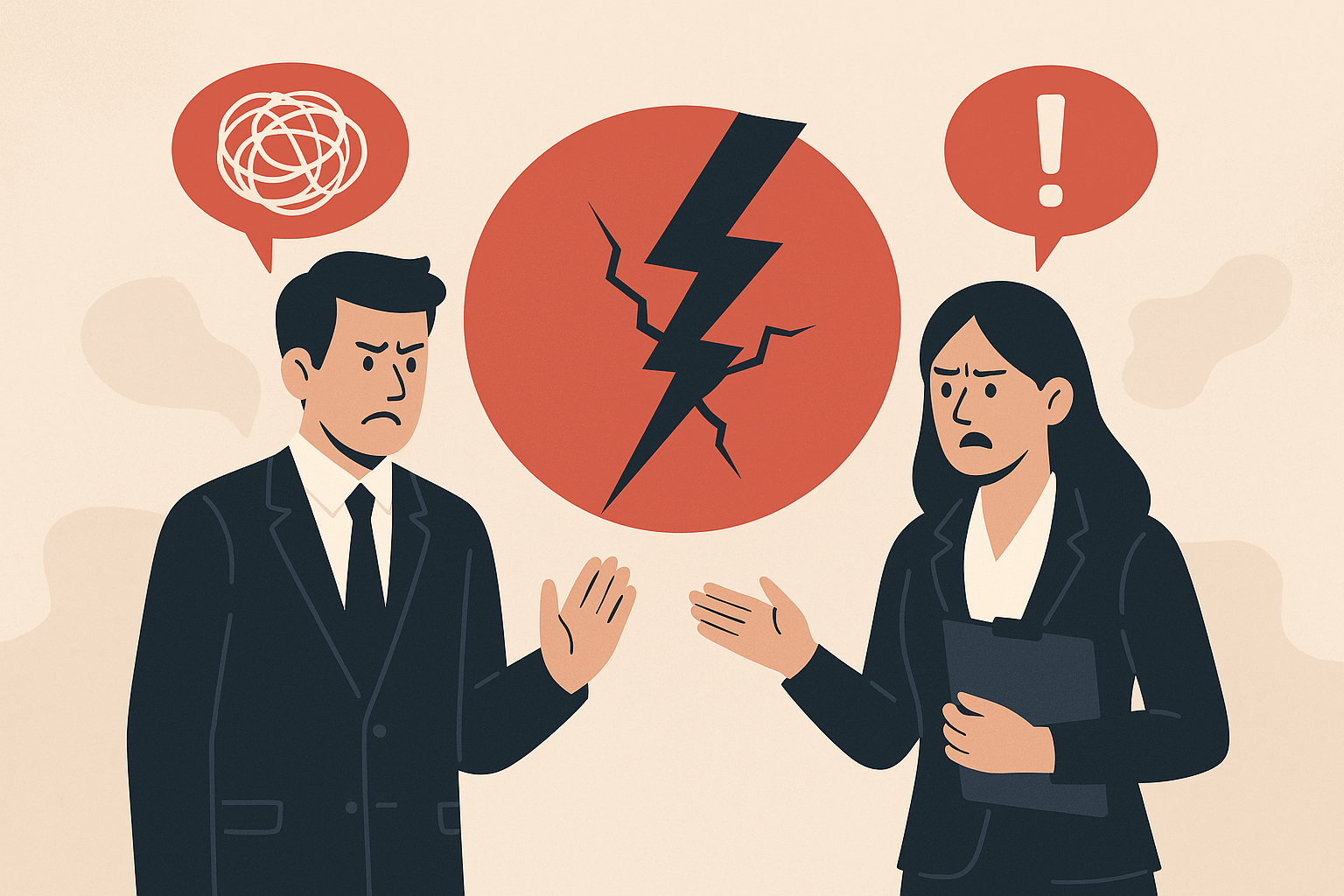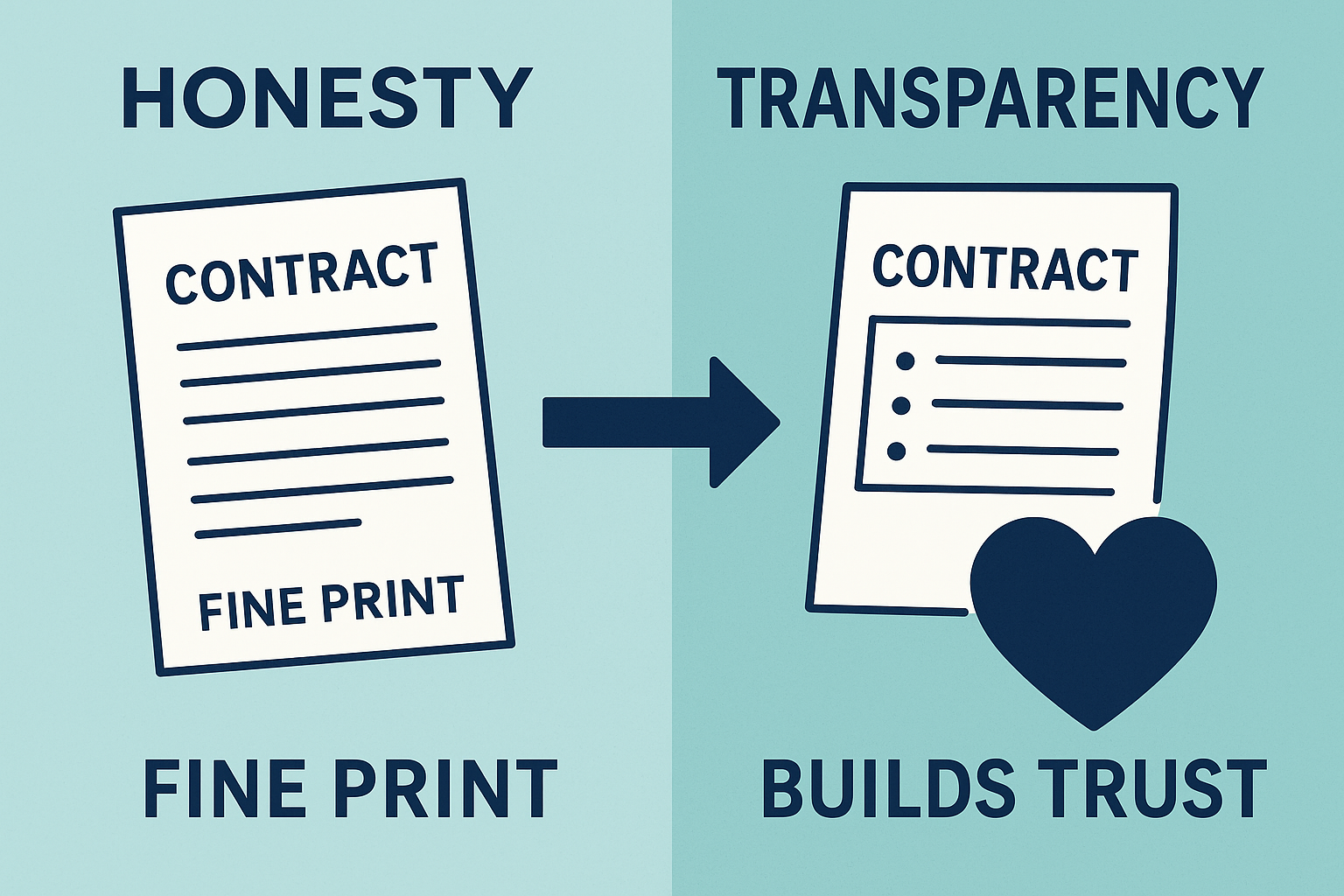Misunderstandings are one of the most common causes of customer complaints. A client is hit with a charge they did not expect. A customer signs up for something they did not fully understand. The business may have disclosed the information somewhere in the fine print, but if it was not communicated clearly, the result is confusion, frustration and, often, a formal complaint.
In legal and financial services, where trust and regulation go hand in hand, this kind of communication failure is costly. But it is also preventable.
In this article, we’ll explore:
- The hidden cost of poor communication
- Why communication breaks down
- Clear communication prevents complaints
- What better communication looks like
- How
 i agree helps
i agree helps - Final thoughts
The hidden cost of poor communication
Poorly communicated agreements and client updates are not just frustrating. They are expensive.
In the UK, businesses spend billions each year resolving complaints. Many of these cases could have been avoided. In regulated industries, the consequences are even greater. The Financial Ombudsman Service reported over 165,000 new complaints in 2022–23. Many were linked to poor communication, where the client did not understand what they were signing up for or what would happen next.
Often, the issue is not whether the firm followed the rules. It is whether the customer genuinely understood what they were told. Around one in three complaints are upheld in the customer’s favour. In many of those cases, the problem was not legal wrongdoing but a lack of clarity.
But the cost is not just financial. A single complaint can trigger hours of internal reviews, calls, meetings and reporting. And for every formal complaint, there are many more customers who say nothing and simply take their business elsewhere.
When communication is unclear, firms face:
- Higher complaint volumes
- More pressure on customer support teams
- Regulatory scrutiny
- Damage to trust and brand reputation
It all adds up.
Why communication breaks down
Most businesses do not set out to confuse their clients. But the way client communications are typically handled makes misunderstandings more likely. Here is why:
- They are written to protect, not explain
Agreements and disclosures are drafted to be watertight, but not necessarily understandable. The result is dense, legal language that is hard to follow. - They include too much at once
Clients are expected to process everything from terms and exclusions to deadlines and disclaimers in one go. Key details get lost in the volume. - Understanding is assumed, not confirmed
A tick box or digital signature is often treated as proof of consent. In reality, many people do not fully understand what they are agreeing to. - Staff do not always explain things clearly
Even trained teams can struggle to explain complex documents. If they rush, skip steps or assume understanding, gaps are left behind.
The result is that clients often walk away thinking they have understood, only to discover later that they missed something important.
Clear communication prevents complaints
The good news is that better communication does make a measurable difference. When clients understand what is being shared with them, complaint volumes go down. Here is what that looks like in practice:
- Fewer disputes
Clear communication means fewer misunderstandings. That means fewer complaints and less time spent resolving them. - Less back-and-forth
Clients who understand what they have received are less likely to ask follow-up questions or challenge decisions. - Stronger relationships
Clarity builds trust. When people feel respected and informed, they are more likely to stay loyal to the business. - Better regulatory outcomes
Firms that can show what was shared, how it was explained and that it was understood are better prepared for regulatory scrutiny.
What better communication looks like
Improving clarity does not mean simplifying the content to the point of losing meaning. It means presenting the information in a way that people can actually understand. These principles apply across sectors:
- Use plain language
Avoid jargon. If a technical term is necessary, explain it clearly. Say “the loan ends after 12 months” instead of “the facility will terminate upon the conclusion of the fixed period.” - Highlight the key points
If something will affect the client, make sure it stands out. Do not bury important details in long paragraphs. Use bold text, headings or summary boxes. - Layer the content
Start with a simple summary or key facts section. Then provide full terms for those who want to read further. - Use multiple formats
Some people prefer video or audio. Others like visual aids. Offering options makes your message more accessible to more people. - Make it interactive
Let clients ask questions. Provide answers in plain language. Encourage them to confirm understanding. This shows you are not just sending information, but engaging with it.
How  i agree helps
i agree helps
 i agree is a platform designed to support clear, auditable communication. It helps firms explain important content in a way that clients actually understand. Here is how it works:
i agree is a platform designed to support clear, auditable communication. It helps firms explain important content in a way that clients actually understand. Here is how it works:
- Upload any communication or agreement
- The system creates a short summary in video, audio or text
- Key terms are highlighted and explained in plain language
- Clients can ask questions in real time and see responses
- The platform records confirmation of understanding
- A complete audit trail is created and stored securely
This gives you proof that the client received the information, understood it and confirmed it. That reduces disputes, supports compliance and improves the overall client experience.
Final thoughts
When communication is clear, complaints fall. When people understand what they are agreeing to, there are fewer surprises, fewer objections and fewer disputes.
Confusion is expensive. Clarity is far cheaper. It builds trust, reduces risk and helps businesses stay on the right side of regulators and clients alike.
Tools like  i agree make it easier than ever to turn complex communications into clear, confident conversations. The result is not just fewer complaints, but better outcomes all round.
i agree make it easier than ever to turn complex communications into clear, confident conversations. The result is not just fewer complaints, but better outcomes all round.
It is time to make sure “I agree” really means “I understand.”
Ready to try the future?
Explore how  i agree can help you create contracts people actually understand.
i agree can help you create contracts people actually understand.
Check out our FAQ or try our demo to see how it works




